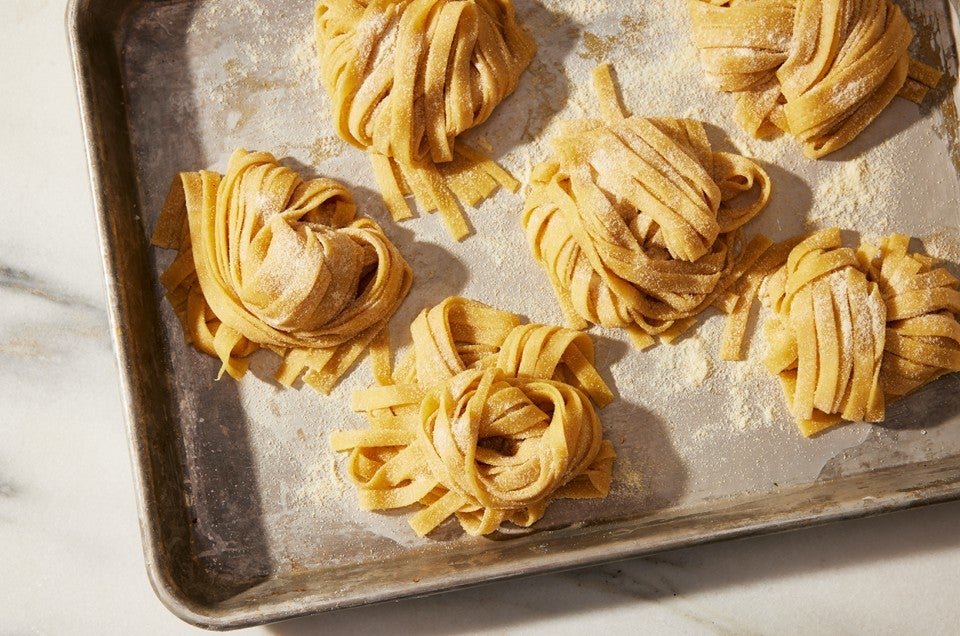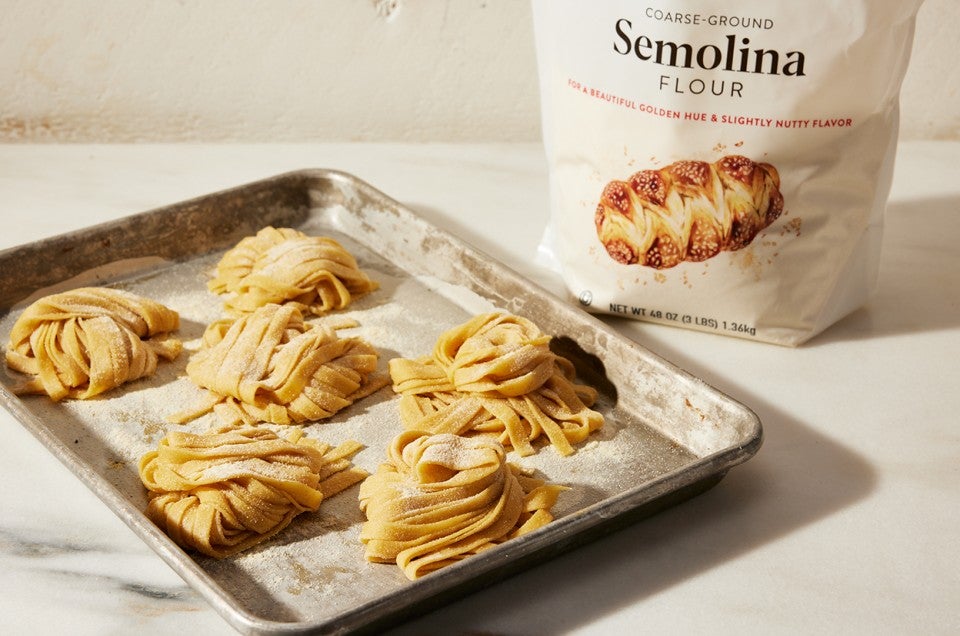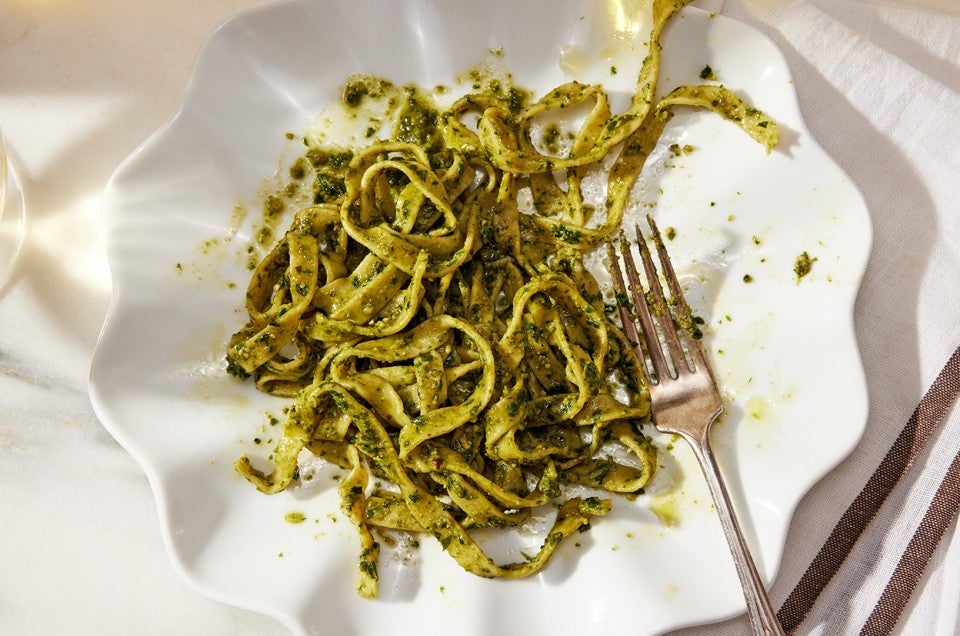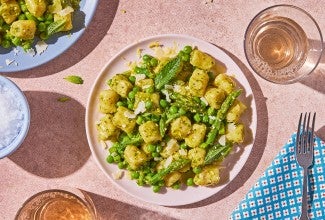-
To make the dough: Weigh your flour; or measure it by gently spooning it into a cup, then sweeping off any excess.
-
Add the flours and salt to the bowl of a food processor and mix for 15 seconds to combine.
-
Crack the eggs into a small separate bowl or liquid measuring cup. With the food processor running, add the eggs one at a time, allowing each one to fully incorporate before adding the next. Once thoroughly combined, the mixture will look like wet sand. When the dough is pinched between your thumb and fingers, it'll clump together briefly and then crumble apart.
-
Scrape down the sides of the bowl and add 3 tablespoons (42g) of the water to the food processor. Process until the mixture starts to form large clumps with some loose bits, about 20 seconds. If there are more loose bits than large clumps, scrape down the sides and add the remaining water, 1/2 tablespoon at a time, pulsing until the mixture is mostly in large clumps with some loose bits.
-
Transfer the mixture to a clean work surface. Knead by hand for about 2 minutes to incorporate all the loose bits and form a smooth dough. Form the dough into a disk about 1" thick and wrap it tightly with plastic wrap or your favorite reusable wrap. Let the dough rest for at least 30 minutes at room temperature, or up to overnight in the refrigerator. (If the dough is refrigerated, it will need to come to room temperature for at least 30 minutes before moving on to the next step.)
-
Divide the dough into 4 equal pieces (about 141g each). Return 3 pieces to the plastic wrap to prevent them from drying out while working with the remaining piece. Line a baking sheet with parchment and sprinkle lightly with additional semolina flour.
-
Roll the dough through a pasta machine once on the largest setting. Fold the dough in thirds like a letter (this helps it become a rectangular shape) before rolling it a second time on the largest setting.
-
Adjust the pasta machine to the next increment and pass the dough through. Continue adjusting the setting and rolling the dough through the machine until you’ve used setting #7 on a standard pasta roller (0.8 mm thick). The dough should be between 5" and 6" wide at this point.
-
To use a noodle cutter: Use a bench knife to cut the dough into 12" long strips. Using one length at a time, pass the dough through the noodle cutter on your pasta machine. Place noodles onto the semolina-dusted baking sheet and toss to coat lightly. (This prevents the noodles from sticking together.)
-
To cut noodles by hand: Use a bench knife to cut the dough into 12" long strips. Using one length at a time, lightly coat the top with a little semolina flour, then loosely roll it up. Cut the rolled-up dough into strips — about 3/4" wide for pappardelle, 1/2" wide for fettuccine, and just over 1/8" wide for linguine. Unroll the strips and place the noodles onto the semolina-dusted baking sheet and toss to coat lightly.
-
Once the noodles are cut and coated with semolina flour, coil the pasta into loose mounds (“nests”) and set them aside until you’re ready to boil them. Repeat with the remaining pieces of dough.
-
To cook the pasta right away, bring a large pot of heavily salted water to a boil. Add the pasta to the water, one mound at a time. Stir the noodles once to ensure they don't stick together, and boil for 4 minutes for an al dente texture for pappardelle or fettuccine noodles, or 2 minutes for linguine noodles. Drain the pasta and serve immediately with your sauce of choice.
-
Storage information: Extra uncooked pasta can be stored in the freezer for up to 2 weeks and boiled directly from frozen. It may require a couple of extra minutes of cooking time. Leftover cooked pasta can be stored in the refrigerator with sauce, covered, for up to 2 days.





















